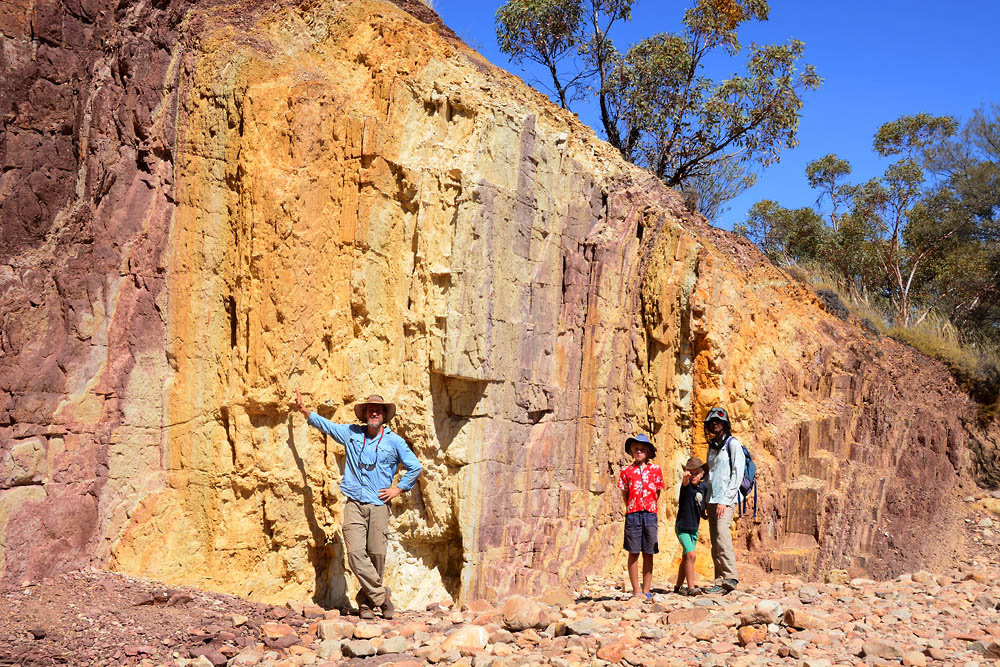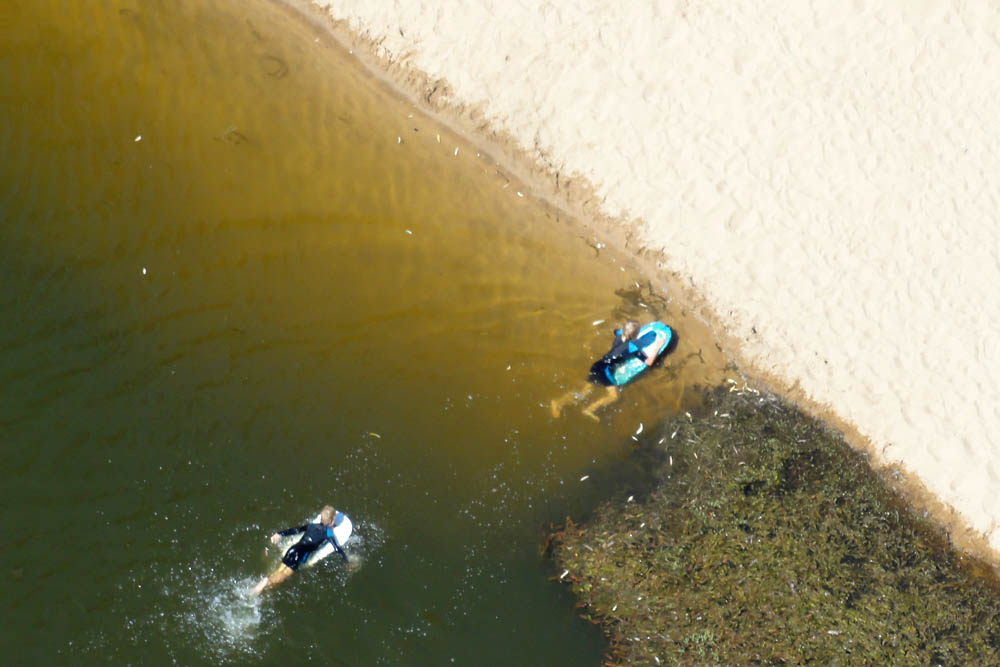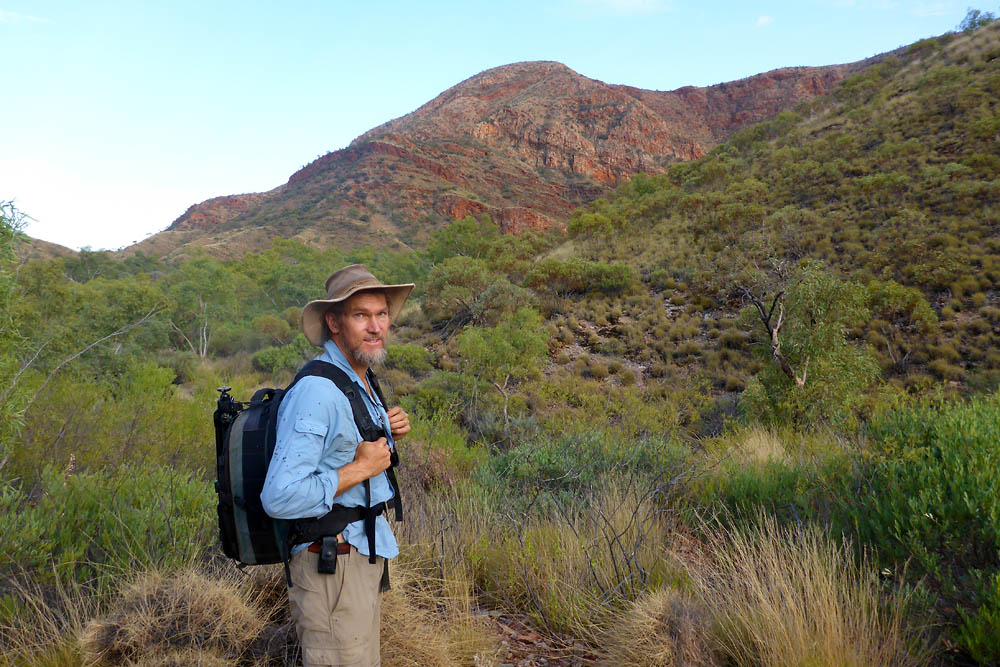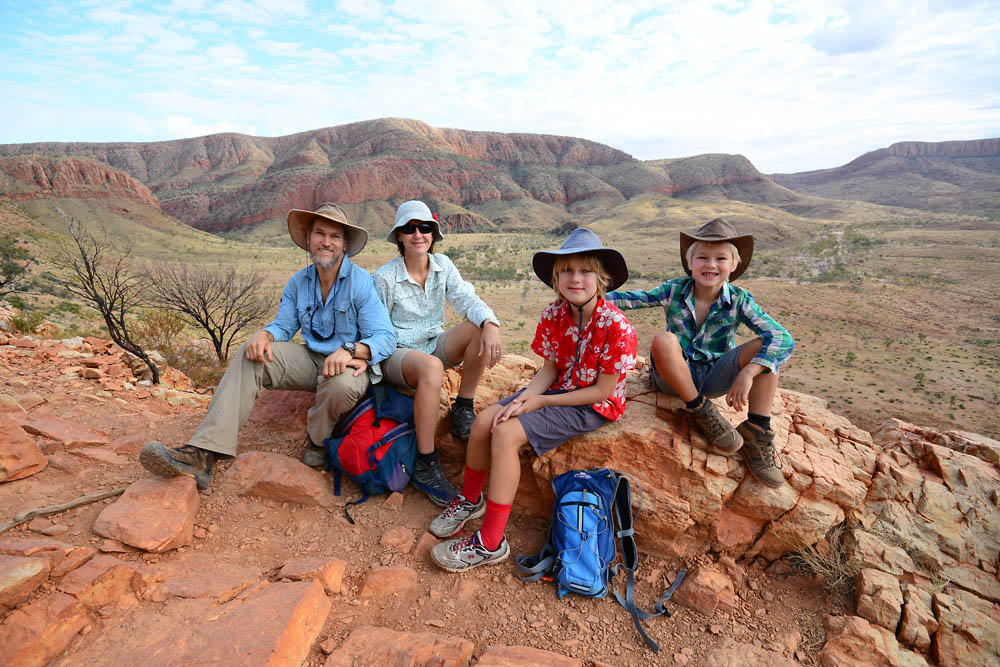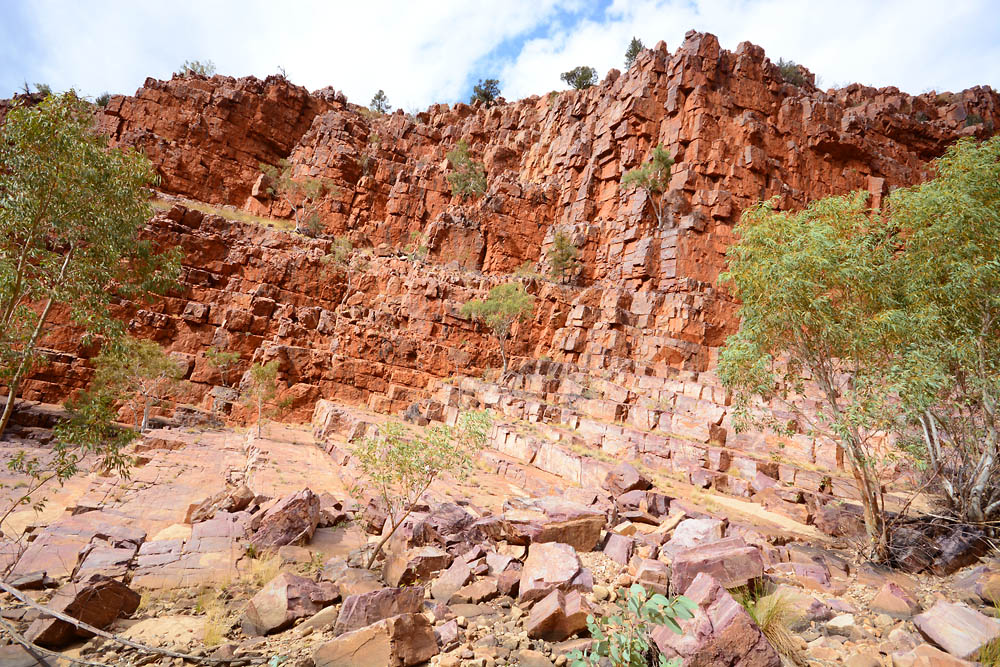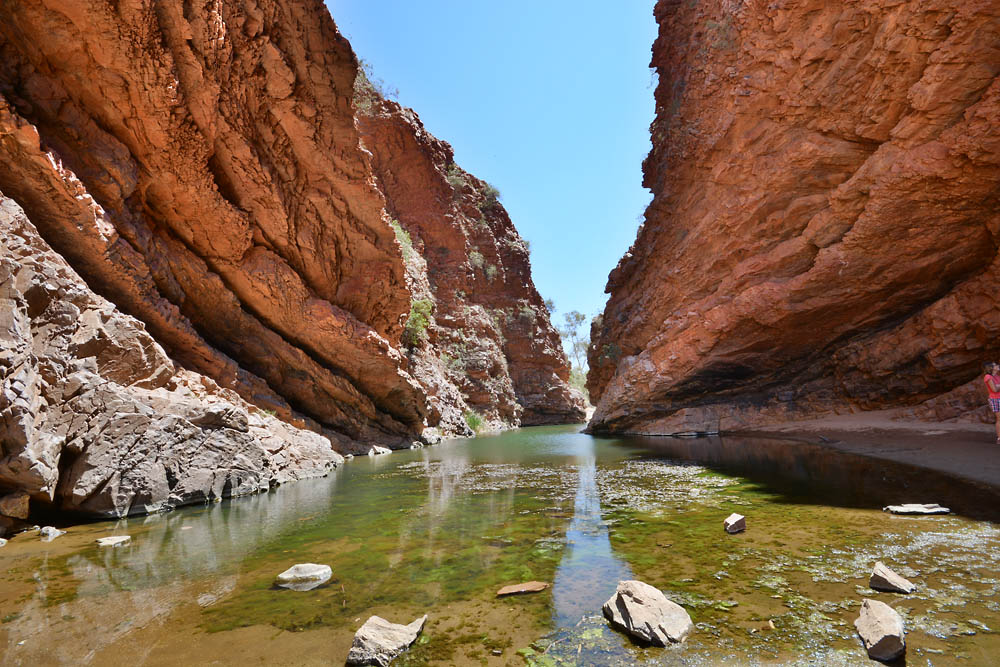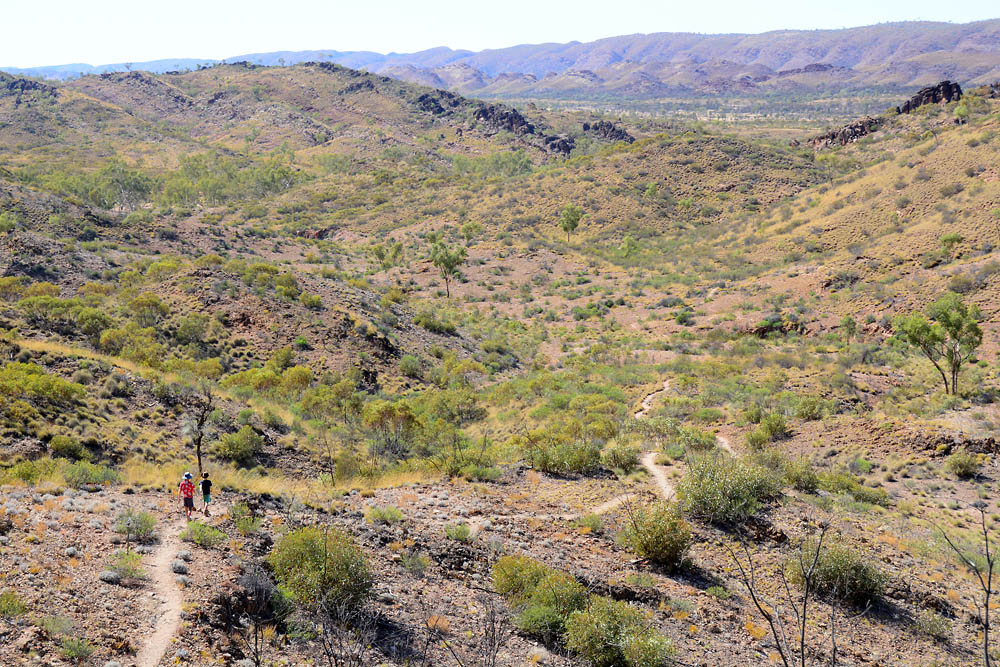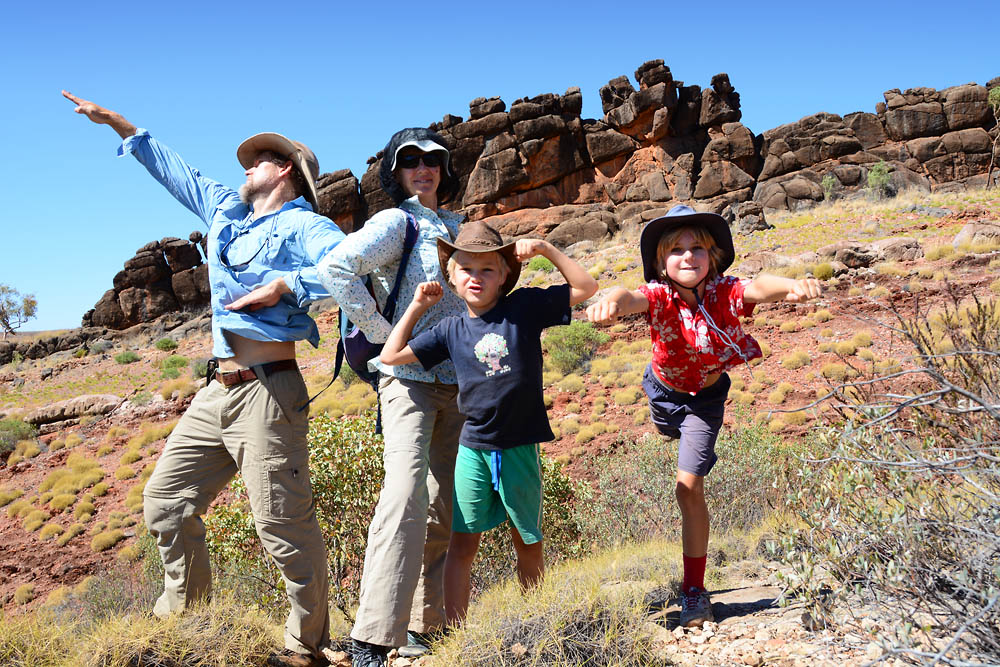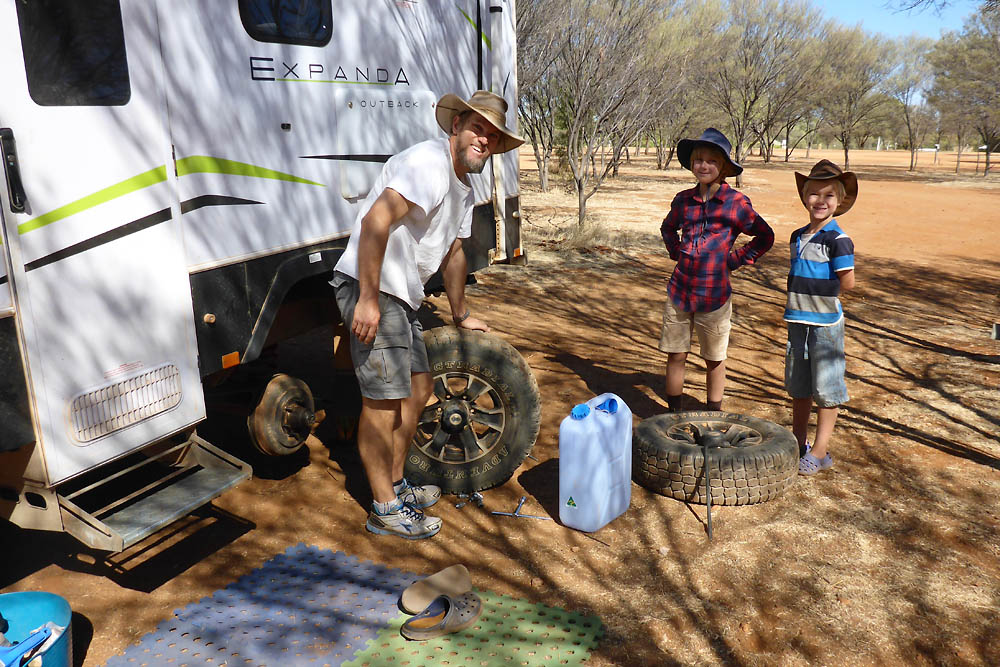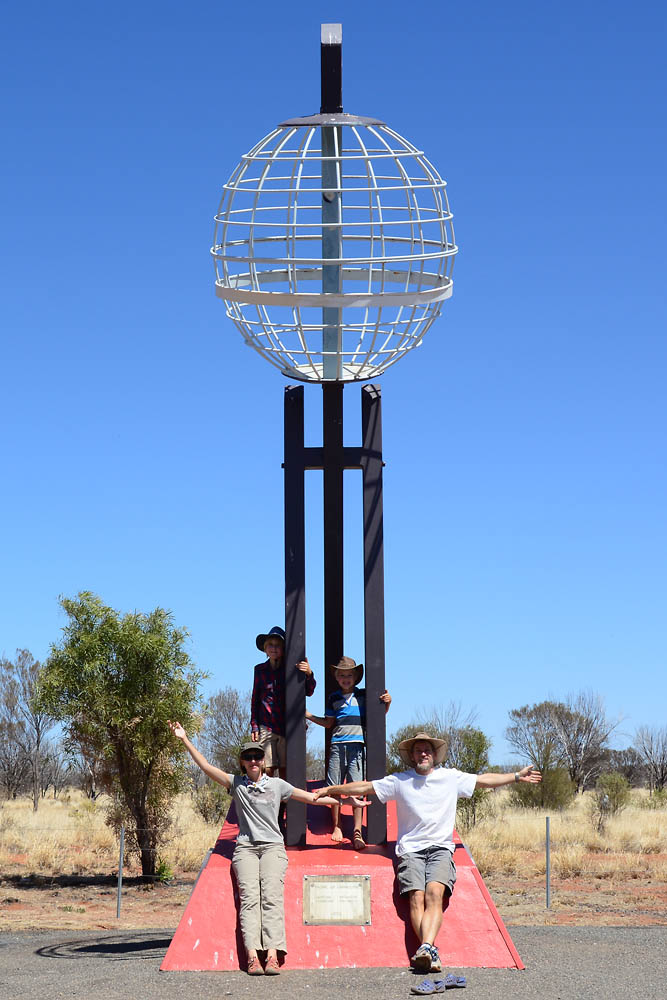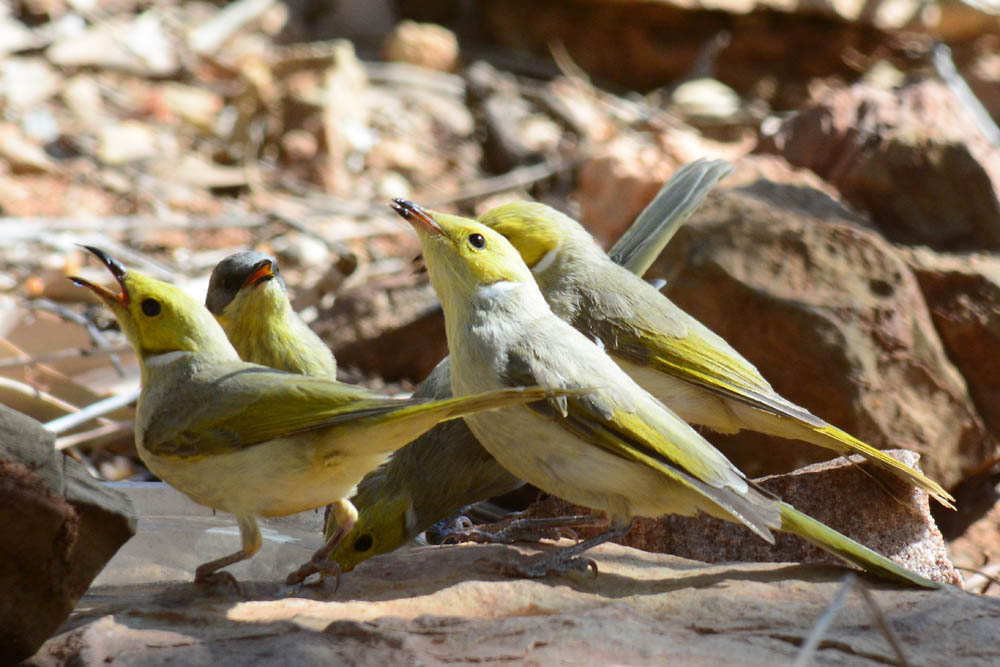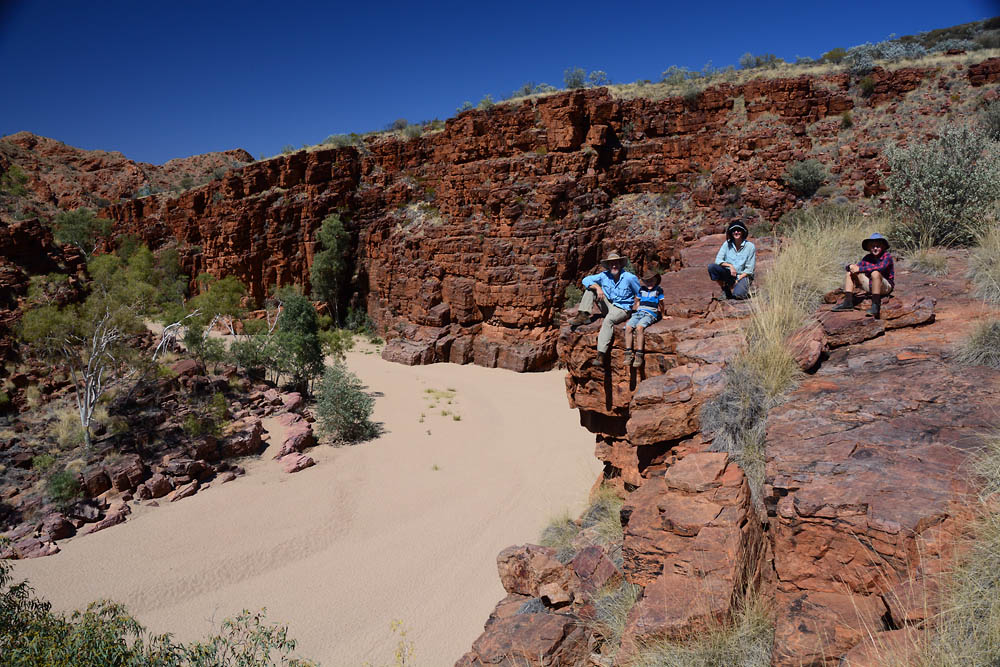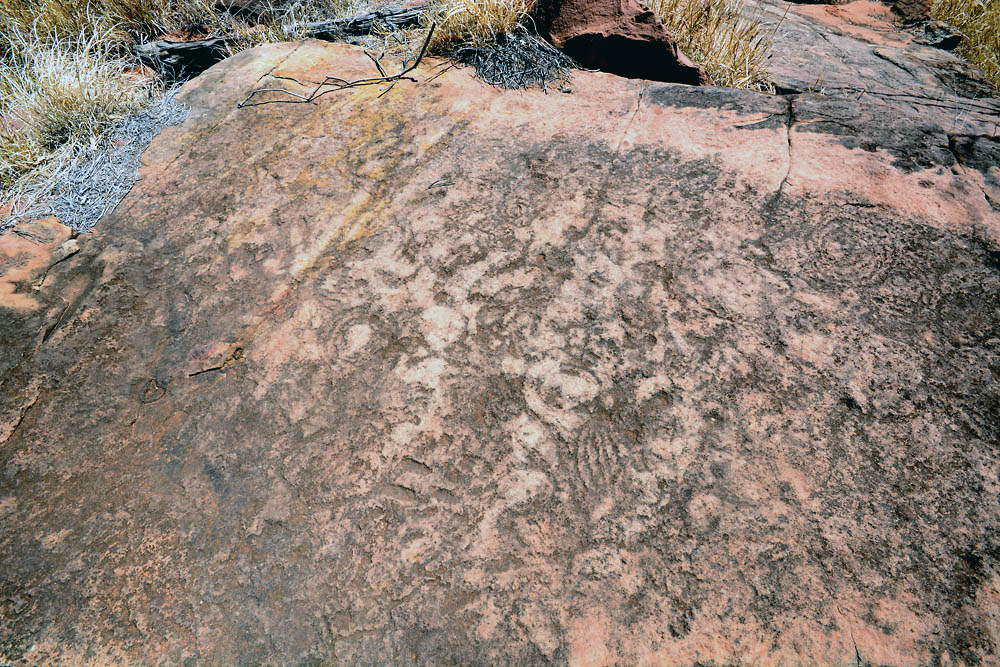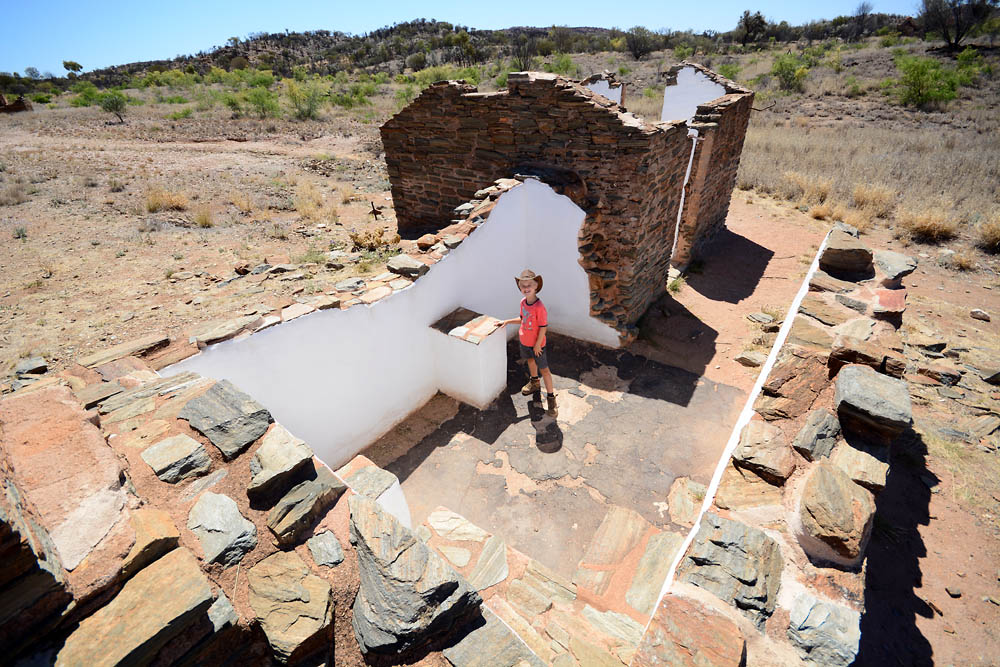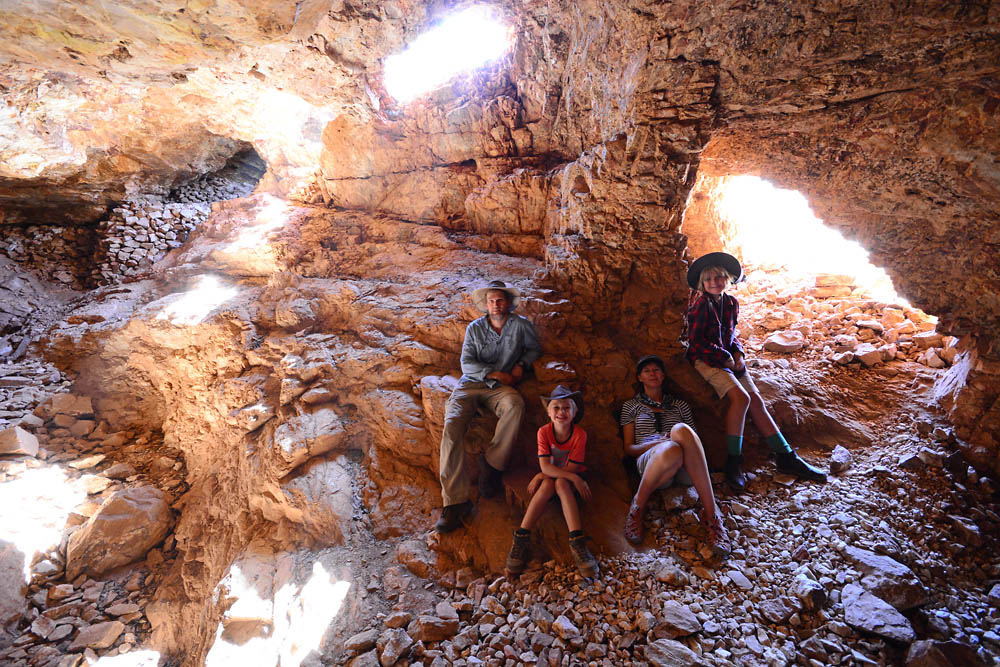Pack up, hook up, drive out. Next stop, Ormiston Gorge, just 40 odd kilometres further west. Such a short hop meant our departure time wasn’t critical. Our first stop along the way was Serpentine Gorge, which some pundits claimed was ‘better than Standley Chasm’. Our response; ‘rubbish’, free does not necessarily mean better. Kris and the boys satisfied themselves with the short 2 km walk to the shady, but I must say slightly manky, waterhole. I thought I’d give Serpentine a chance and so climbed the short steep walk to the lookout. I was rewarded by a fabulous view up and along the gorge, with a narrow fissure or chasm visible in the far distance. Sadly this is not accessible with the waterhole full. The days have slowly been getting hotter, with most days now around 35 to 38 degrees. Not so bad as the humidity is still extremely low, but this combination turns you quite deliquescent, and really sucks the moisture from every pore.
 The view from Serpentine Gorge lookout – worth the climb.
The view from Serpentine Gorge lookout – worth the climb.
A few kilometres down the road were the Ochre Pits. I had always wondered where the aborigines obtained their ochre. The answer is from quarries just like this. Thin layers in the MacDonnell ranges that contain every hue from deep ruddy red, to orange, yellow and brilliant kaolin white. Signs warn of significant fines for removal of ochre, as it is still used in traditional aboriginal ceremonies. So it is disappointing that so many clumsy hand scrapes to remove a ‘souvenir sized’ sample are so obvious.
The ochre pits (notice I’m not touching the wall…).
Just a few minutes later, we arrived at Ormiston Gorge. This sits in a national park, but has a privately run kiosk on site as well as hot showers. This is reflected in the tiered pricing. The fees here were more than three times those from Trephina Gorge in the East MacDonnell Ranges. After we all had a quick swim, Kris and the boys settled into the water hole (Kris to read, the boys to play on boogie boards), whilst I walked the Ghost Gum walk. This short climb offers a magnificent view straight down to the water hole, and then takes you a few more kilometres along the gorge.
Views around Ormiston Gorge.
The big walk, Ormiston Pound (voted the number 1 walk in Australia according to the kiosk operator), was scheduled for early next morning to beat the heat. So we were up at 6:30 and out the door soon after. The first few kilometers were unrewarding, but this all changed when we walked up to the lookout, where the entire Pound was revealed. The view was absolutely magnificent. After obligatory photos and video were taken, we finished the rest of the walk, which takes you across the floor of the Pound, back along the gorge where massive chunks of pink and purple quartz litter the dry river bed. Sam was impressed with the gorge walls, which are very ‘blocky’ and look like they could have been constructed in Minecraft!
Walking Ormiston Pound – quite spectacular!
Blocky ‘Minecraft-esque’ walls.
A magnificent example of 120 million year old seafloor.
The boys final treat was an inflatable raft, kindly lent to them by Nick the friendly kiosk operator. Their excellent paddling skills meant they mostly went around in circles but they eventually managed to explore all corners of the water hole after working out the benefits of cooperative paddling.
And around we go…
